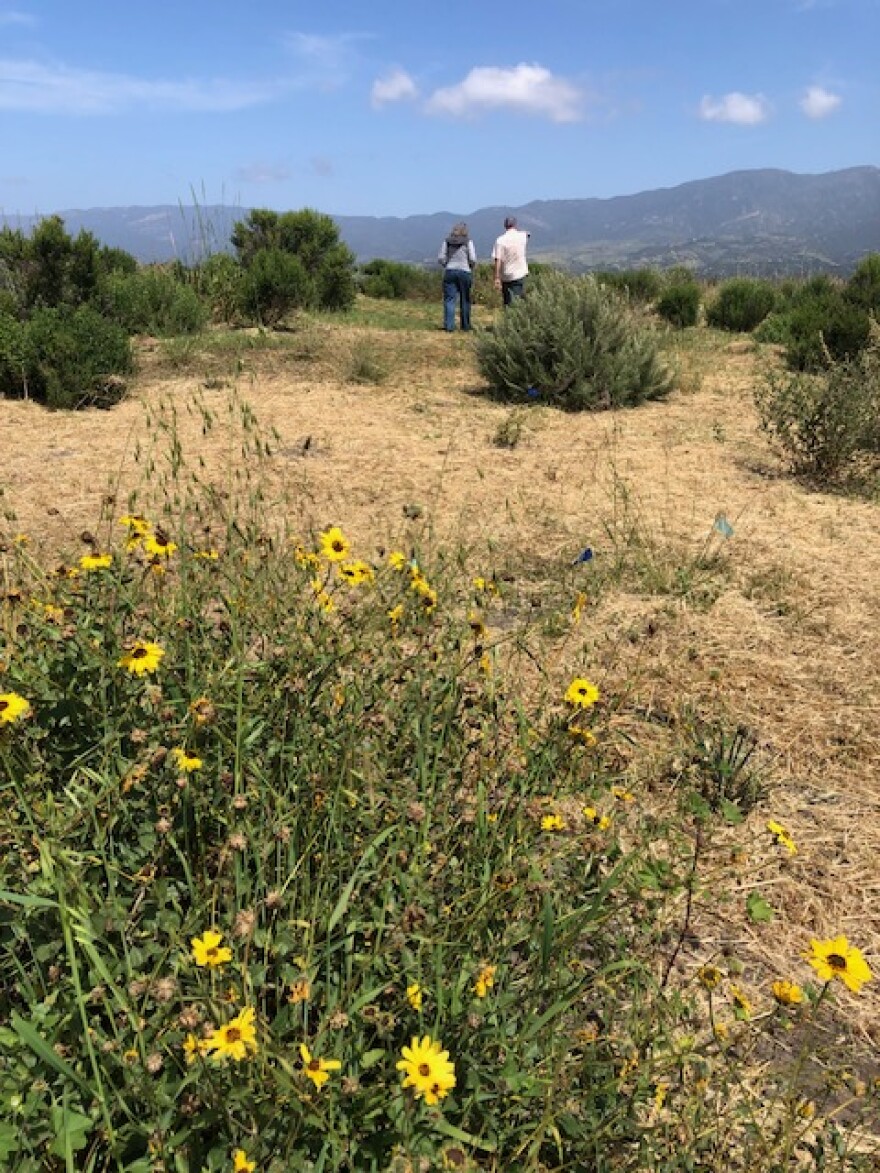It's a mesa with a spectacular view of the Santa Barbara coastline. The hillside is covered with green bushes and plants, making it look like a slice of nature.
It is now, but it wasn't two years ago.
It’s an experimental garden in Elings Park, created by removing weeds and nonnative species and planting native plants.
"We're looking at our landscape transformation site, where we're demonstrating the benefit of California native plants for supporting life," said Denise Knapp, Director of Conservation and Research at the Santa Barbara Botanic Garden. The Garden and Elings Park teamed up for this project two years ago.
"Right across from us is a sea of weeds and invasive grasses, really flammable, and that's about it, because the weeds push out the native diversity that we love and need. Here, in our one acre, we've replaced that with a diversity of native plants," said Knapp. "This garden is doing phenomenally. We are so excited and proud. A lot of things are flowering."
It’s a unique project for Elings Park, which is special in itself.
"We are 230 acres. Disneyland is a measly 100 acres," said Elings Park Executive Director Dean Noble.
"We are a private, 501(c)(3), community-oriented park," said Noble. "A gentleman by the name of Jerry Harwin had a crazy idea back in the 1960s to take the town dump and transform it into much-needed playing fields, and here we are 40 years after the official opening in November of 1985."
A half dozen community groups came together to help with the labor for clearing the acres of land and replanting it. Some grants helped pay for it.
The Botanic Garden’s Denise Knapp takes us on a tour of the test garden. Is it okay for visitors to walk into the garden?
"It totally is," confirmed Knapp. "We've put this fence up, but it's open on all four sides. So, really, what we were just trying to do is delineate the space, to let people know they are entering something different and slightly special."
Knapp said weeds still pose an issue for the garden, so they must stay on top of the nonnative plants.
"The site has been disturbed for a really long time, and the weed seed bank is out of hand," said Knapp. "So, even though we have a better weed control method, it's still just a lot of hours of hand pulling these weeds, and we are just really fortunate that we have a lot of volunteers. We've had almost 500 people engaged with the project."
Those involved say the strongest endorsement of the project’s success isn’t coming from people but from nature.
"The birds found these plants almost immediately," said Noble. "That's because native plants support the web of life better, starting with the bugs that eat the plants, and then the bugs that eat them, and the birds that eat all of them," added Knapp. "Pollinators definitely like it better here, and birders are super excited at the rare species they are seeing, and this is after less than two years."
As part of the experiment, they've also brought in some plants from other areas to the coast to see how they will do in a slightly different temperature setting. So far, they have been responding well. The goal is to eventually remove more of the nonnative plants and expand the garden from its current acre to another five to six acres of the bluff.



